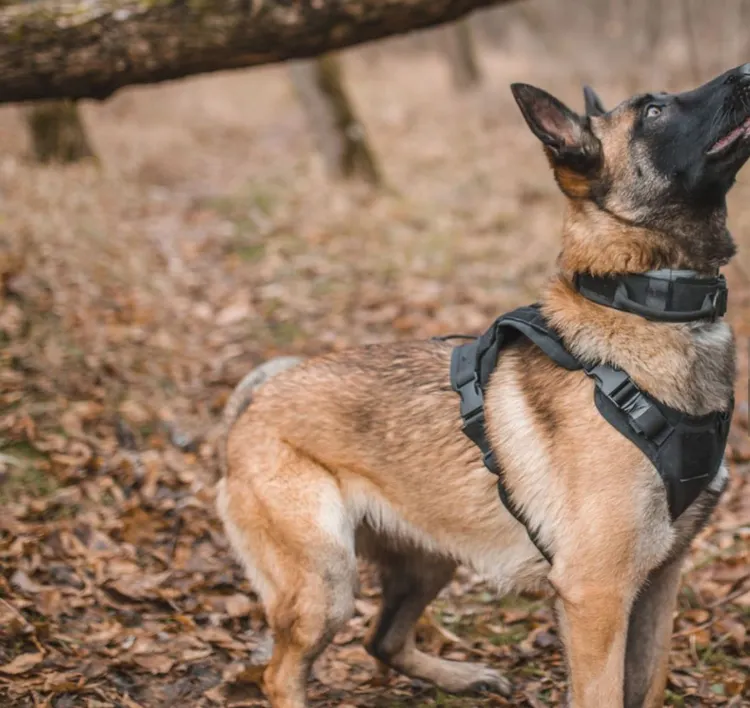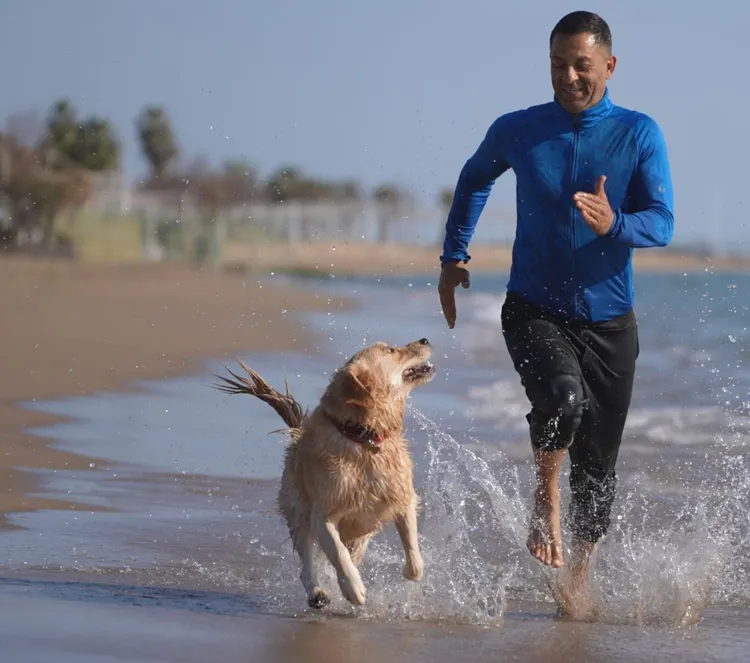Ever wondered if your energetic pup has what it takes to become a hero? Search and rescue (SAR) training transforms dogs into lifesavers, capable of locating missing persons and playing vital roles in disaster relief efforts. If your dog shows a strong sense of smell, boundless energy, and a knack for problem-solving, SAR training could be a perfect fit. With the right preparation and eco-conscious training practices, you and your dog could become an essential team in emergency situations.
What Are Search and Rescue (SAR) Dogs?
SAR dogs are specially trained canines used in missions to find missing persons, whether in the wilderness, urban areas, or during natural disasters. These dogs are trained to track scents, navigate difficult terrains, and work tirelessly for long periods. They play pivotal roles in situations where human rescuers are limited in speed and ability. With their incredible sense of smell, SAR dogs can locate people trapped under rubble, lost in dense forests, or even in bodies of water.
Roles of SAR Dogs:
SAR dogs are deployed in various scenarios, including:
- Wilderness Search Missions: Ideal for locating hikers or missing persons in forests or mountainous areas.
- Urban Disaster Rescues: Essential during earthquakes, building collapses, or explosions where they help locate trapped survivors.
- Water Rescue: Specially trained dogs assist in saving people from drowning or finding bodies in lakes and rivers.
- Cadaver Search: SAR dogs can also locate human remains in both open areas and disaster zones.
Characteristics of an Ideal SAR Dog:
Not every dog is suited for SAR work. The best candidates exhibit certain qualities:
- High energy levels: SAR dogs need stamina and endurance to work long hours in challenging conditions.
- Strong focus: They must be able to concentrate on their task without distraction, even in chaotic environments.
- Exceptional sense of smell: Dogs have an innate ability to detect and differentiate scents, making them invaluable in SAR missions.
- Good socialization: They need to be comfortable around people and other animals, especially in stressful scenarios.
What Do SAR Classes Teach?
SAR training programs are designed to equip dogs with the skills necessary to perform efficiently in high-pressure, life-saving situations. These courses typically focus on several key areas:
1. Basic Obedience and Socialization:
Before specialized training begins, dogs must master the fundamentals of obedience. Commands like “sit,” “stay,” and “come” are critical in ensuring a dog responds promptly in emergency situations. Additionally, SAR dogs are exposed to various environments, noises, and people to ensure they remain calm and effective in unpredictable situations.
2. Scent Detection:
SAR dogs are trained to recognize and follow specific human scents over long distances and various terrains. Whether it’s tracking a person in the woods or locating someone buried under debris, scent detection is one of the most important skills these dogs learn.
3. Agility Training:
To navigate obstacles like rubble, narrow passageways, or water, SAR dogs need strong agility. Training involves teaching them how to climb, jump, and balance on unstable surfaces—skills that can make the difference in rescue missions.
4. Endurance and Fitness:
SAR work is physically demanding, requiring dogs to work for hours or even days at a time. Endurance training builds the stamina and strength needed to sustain their efforts in demanding environments.
Types of Search and Rescue Classes
SAR training classes come in various specializations depending on the type of rescue work a dog will be performing.

1. Wilderness Search:
In these courses, dogs learn how to track scents in forests, mountains, and other open spaces. They are trained to follow scent trails left by missing persons and to indicate their discovery to the handler.
2. Disaster Response:
These classes prepare dogs to work in urban environments affected by natural disasters or accidents, such as earthquakes or building collapses. Dogs learn to navigate rubble, locate trapped victims, and work in confined spaces.
3. Water Rescue:
For water-based rescues, dogs are taught how to assist people in distress in lakes, rivers, or oceans. Some dogs specialize in detecting human scent in water, making them invaluable for recovery missions.
4. Cadaver Search:
Specialized training is available for dogs that will be searching for human remains. These dogs are trained to detect the scent of decomposition and can locate bodies even in complex environments.
How to Prepare Your Dog for SAR Training
Before enrolling your dog in formal SAR training, there are several steps you can take to prepare them physically and mentally:
1. Build Obedience Skills at Home:
Strengthen your dog’s understanding of basic commands like “sit,” “stay,” and “come.” SAR dogs need to respond quickly to these commands in high-stress situations.
2. Socialize with New Environments:
Expose your dog to a variety of settings, such as busy parks, forests, and even noisy urban areas. The more diverse environments your dog encounters, the better they will handle new situations during SAR missions.
3. Exercise and Mental Stimulation:
SAR dogs need to be both physically fit and mentally sharp. Engage your dog in regular exercise to build endurance, and provide puzzle toys or scent games to keep their mind active.
Eco-Friendly Tips for SAR Training
Being environmentally conscious while training your dog for search and rescue work is entirely possible. By using sustainable gear and minimizing your ecological footprint, you can ensure that your training practices align with eco-friendly values.

1. Sustainable Gear:
Choose eco-conscious harnesses, leashes, and training gear made from sustainable materials like organic cotton, hemp, or recycled plastics. Many companies now offer durable, environmentally-friendly dog gear that can withstand the demands of SAR work.
2. Minimize Environmental Impact:
When training in outdoor environments, be mindful of leaving no trace. Avoid disturbing wildlife and ecosystems, and make sure to pick up after your dog. Opt for biodegradable waste bags to reduce plastic waste during training.
3. Ethical Training Practices:
Use positive reinforcement methods during training to ensure that your dog is motivated and happy to work. Avoid harsh punishments or coercive techniques, and instead, focus on rewarding your dog for good behavior and successful tasks. Not only is this more humane, but it also fosters a strong bond between you and your dog.
Why SAR Dogs Are Important
Search and rescue dogs play a vital role in life-saving missions across the globe. Their acute sense of smell, endurance, and determination make them invaluable in emergency situations. Here are some key reasons why SAR dogs are so important:
1. Lifesaving Work:
SAR dogs have saved countless lives by locating missing persons in time-sensitive situations. Whether it’s finding a lost hiker or someone trapped after an earthquake, their work can make the difference between life and death.
2. Disaster Relief Heroes:
During natural disasters like earthquakes, floods, or hurricanes, SAR dogs help find survivors in debris and dangerous conditions. Their ability to navigate challenging terrains and locate people where human rescuers might struggle makes them essential to disaster response teams.
3. Bonding with Your Dog:
Training a dog for search and rescue not only gives them a meaningful purpose but also strengthens the bond between you and your dog. Working together as a team in high-pressure situations builds trust and creates a deep connection that’s incredibly rewarding.
Search and rescue classes provide an exciting opportunity to channel your dog’s natural abilities for the greater good. By developing skills in scent detection, agility, and endurance, SAR dogs can become crucial assets in life-saving missions. With the right preparation, a commitment to eco-friendly practices, and an emphasis on ethical training methods, you and your dog can make a real difference in emergency situations. Whether you aim to help with wilderness searches, disaster response, or water rescues, SAR training is a journey that can bring you and your dog closer together while contributing to the safety and well-being of others.



